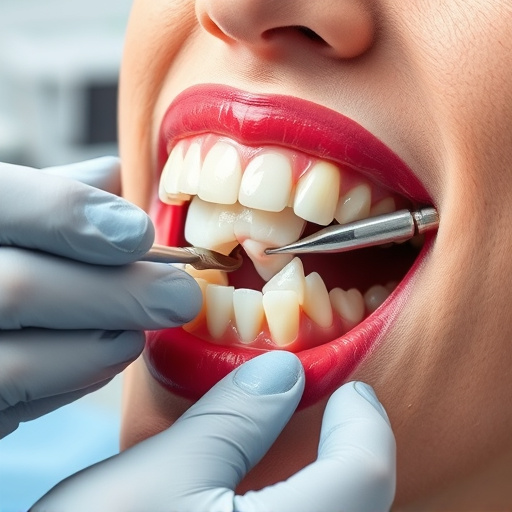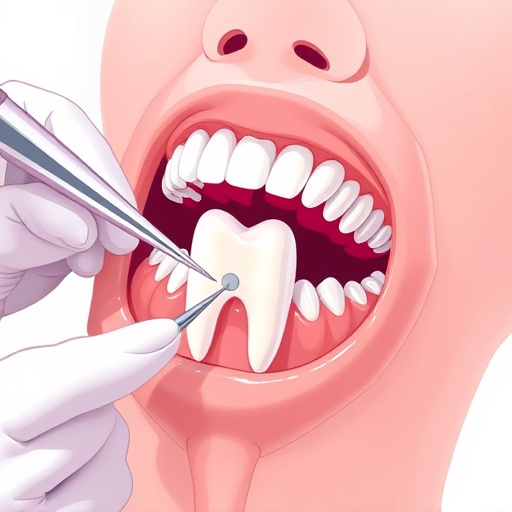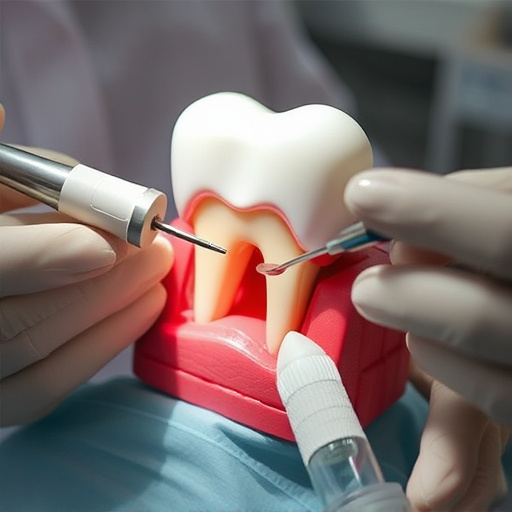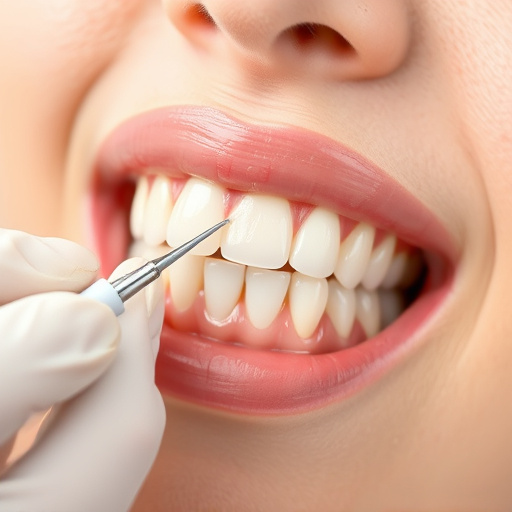TMJ disorder, caused by various factors like dental misalignments and jaw injuries, leads to pain, popping sounds, and chewing difficulties. Effective TMJ disorder treatment involves diagnosis and exploration of diverse options such as therapy, medication, dental interventions (cleanings, fillings), bite splints, dental implants, wisdom tooth removal, and custom-fitted mouthguards. Ongoing support from family dentistry practices ensures long-term relief through regular check-ins, lifestyle guidance, psychological support, and symptom monitoring.
TMJ disorder (TMD) affects millions, causing jaw pain, popping sounds, and difficulty chewing. Understanding its symptoms and causes is crucial for effective management. This article explores various TMJ disorder treatment options designed for long-lasting relief, from therapy and medication to surgical interventions. We also delve into the underappreciated role of ongoing support, including counseling and lifestyle adjustments, in successfully navigating this complex condition. Discover how a comprehensive approach can bring lasting comfort and restore quality of life.
- Understanding TMJ Disorder: Symptoms and Causes
- Exploring Treatment Options for Long-Lasting Relief
- The Role of Ongoing Support in Managing TMJ Disorder Effectively
Understanding TMJ Disorder: Symptoms and Causes

TMJ disorder, or temporomandibular joint disorder, is a complex condition affecting the jaw joint and surrounding muscles. It’s characterized by pain in the jaw, face, or neck areas, often accompanied by popping or clicking sounds during jaw movement. Individuals with TMJ disorder may also experience difficulty opening or closing their mouth fully, making chewing challenging.
The causes of TMJ disorder are multifaceted. It can stem from issues like dental misalignments, injuries to the jaw, or prior dental surgeries. Grinding teeth (bruxism) and clenching habits are also significant contributors. Furthermore, arthritis and other inflammatory conditions can play a role in damaging the joint over time. Proper diagnosis is crucial for effective TMJ disorder treatment, which may include a combination of therapy, medication, or dental interventions like comprehensive dental care, including regular dental cleanings and cosmetic fillings, to address any underlying issues.
Exploring Treatment Options for Long-Lasting Relief

When it comes to TMJ disorder treatment, exploring various options is essential for achieving long-lasting relief. This condition, which affects the temporomandibular joint connecting the jaw to the skull, can lead to chronic pain and discomfort. Fortunately, modern dentistry offers a spectrum of effective treatments tailored to individual needs. From conservative approaches like bite splints and therapy to more advanced procedures such as dental implants or wisdom tooth removal (in relevant cases), patients have multiple avenues to explore.
One common and successful method involves the use of custom-fitted mouthguards or splints, which can reduce stress on the jaw joints during sleep and rest. For those considering more permanent solutions, dental implants offer a game-changer in TMJ disorder treatment. By serving as artificial tooth roots, these implants support dental restorations, providing stable and long-lasting relief for many patients. In certain scenarios, wisdom teeth removal might also be recommended to alleviate pressure on the temporomandibular joint, especially if impacted or causing misalignment.
The Role of Ongoing Support in Managing TMJ Disorder Effectively

Ongoing support plays a pivotal role in managing TMJ disorder (TMD) effectively. Beyond initial treatment protocols like therapy, medication, or dental procedures such as dental implants or tooth extractions, continuous care is essential to prevent relapse and maintain long-term relief. Family dentistry practices often provide this ongoing support, offering regular check-ins and adjustments to treatment plans based on the patient’s evolving needs.
This proactive approach involves monitoring symptoms, providing guidance on lifestyle changes, and offering psychological support. By fostering open communication between patient and dentist, ongoing care ensures that any emerging issues are promptly addressed. This comprehensive strategy not only enhances the effectiveness of TMJ disorder treatment but also contributes to improved quality of life for those affected by this complex condition.
TMJ disorder treatment doesn’t have to be a lengthy or complex process. By understanding the symptoms and causes, exploring diverse treatment options, and prioritizing ongoing support, individuals can achieve lasting relief from TMJ disorder discomfort. This holistic approach ensures that patients receive comprehensive care tailored to their unique needs, fostering effective management and improved quality of life.














